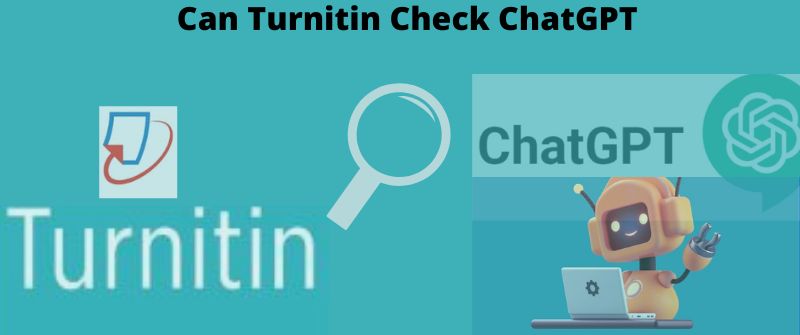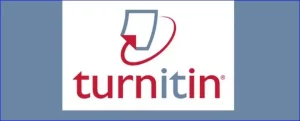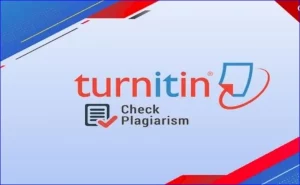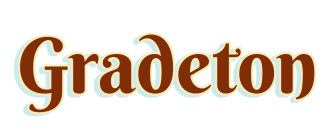Can Turnitin Check ChatGPT? Can Canvas prevent AI cheating

In recent years, technology has revolutionized the way we communicate and create content. From the rise of AI-powered chatbots to advanced plagiarism detection software, new tools are constantly emerging that change the way we write and interact with language.
Two such technologies that are making waves in the writing and academic worlds are ChatGPT and Turnitin. ChatGPT is an advanced language model AI developed by OpenAI, which can generate text and hold conversations.
Turnitin, on the other hand, is an online plagiarism detection software that checks submitted texts for matches or similarities to existing sources in its database.
Together, these two technologies are changing the way we write and think about plagiarism. In this blog, we’ll explore how ChatGPT and Turnitin work, their pros and cons, and how they’re shaping the future of writing and plagiarism detection.
Whether you’re a student, educator, or writer, this blog will offer insights into the latest developments in language technology and how they’re transforming the way we communicate.
Can Turnitin Check ChatGPT
Turnitin is an online plagiarism detection software that checks submitted texts for matches or similarities to existing sources in its database.

ChatGPT is a language model AI developed by OpenAI and used for text generation and conversation purposes.
Turnitin cannot check ChatGPT, as it is not a document or text file that can be submitted for analysis.
Turnitin compares the text submitted to its database of academic and other sources, searching for any matches or similarities that could indicate plagiarism. It does not have the capability to check AI-generated text like ChatGPT.
However, it is important to note that ChatGPT could still be used to generate texts that may be plagiarized or contain copied content.
As with any source of text, it is important to ensure that the content generated by ChatGPT is original and properly cited if it contains information from other sources.
Turnitin as a Plagiarism Detector
Turnitin is an online plagiarism detection software that has become a widely used tool in the academic world. It is designed to check submitted texts for matches or similarities to existing sources in its database.

Turnitin uses advanced algorithms to analyze text and compare it to a large database of academic and other sources to identify potential matches and instances of plagiarism.
One of the main benefits of Turnitin is its ability to provide instructors and educators with a reliable and efficient tool for detecting potential instances of plagiarism.
It can help prevent academic dishonesty and ensure that students are submitting original work.
However, there are also some concerns about Turnitin’s reliability and accuracy. There have been some cases where Turnitin has flagged content as plagiarized even when it is not, which can be frustrating for students and educators.
Additionally, some have raised concerns about the potential privacy implications of submitting work to Turnitin, particularly if the software retains copies of the content.
Can Canvas detect ChatGPT?
Canvas cannot detect ChatGPT as it is simply a text-based AI language model designed to respond to user queries and generate text. This is because Canvas is a learning management system (LMS) that is primarily used in educational institutions to facilitate online learning and does not have the ability to detect AI language models like ChatGPT.
As an LMS, Canvas only provides a platform for educational institutions to manage and deliver online courses, including facilitating online discussions, quizzes, assignments, and other learning activities.
Canvas has various features that enable teachers to create and manage course content, communicate with students, and track student progress.
On the other hand, ChatGPT is an AI language model that has been trained on a large corpus of text data and can generate human-like responses to a wide range of questions and prompts.

ChatGPT is designed to understand natural language and generate responses in a way that mimics human conversation.
Since ChatGPT is a language model and not a physical entity or software that interacts with Canvas, it is not possible for Canvas to detect its presence or use.
ChatGPT is simply a tool that can be used by individuals to generate text-based responses, and it does not interact with Canvas in any way.
In summary, Canvas is a learning management system used to manage and deliver online courses, while ChatGPT is an AI language model designed to generate text-based responses.
While Canvas prevents cheating and is good at preventing it, it cannot do anything against AI content. This is because Canvas cannot detect or interact with ChatGPT as it is not designed to do so.
Why students may tend to Use ChatGPT
ChatGPT is a cutting-edge language model AI developed by OpenAI that has the ability to generate text and hold conversations.

It is capable of generating a wide range of content, including news articles, creative writing, and even poetry.
ChatGPT is based on a deep neural network that was trained on a vast amount of data from the internet, books, and other sources.
One of the key benefits of ChatGPT is its ability to help writers with tasks like generating ideas, creating outlines, and even writing entire pieces of content. It can be particularly useful for writers who are struggling with writer’s block or looking for fresh ideas.
However, there are also some potential drawbacks to using ChatGPT. One of the concerns is that the content generated by ChatGPT could be plagiarized or contain copied content.
It’s important to ensure that any content generated by ChatGPT is original and properly cited if it contains information from other sources.
Incorporating ChatGPT in Writing and detecting Plagiarism
Schools are already using AI in exam management. For instance, they use AI-powered software to monitor students when taking exams. One such case is Canvas detecting switching of tabs while a student is on an online exam.
And as ChatGPT and Turnitin continue to evolve, they are likely to have a significant impact on the way we write and detect plagiarism.
ChatGPT could be particularly useful for writers who are looking to generate new and original content, while Turnitin could help ensure academic integrity and prevent plagiarism.
However, it’s important to consider the potential drawbacks of these technologies, particularly in terms of accuracy, reliability, and privacy. As with any new technology, it’s important to use these tools responsibly and with caution.
Conclusion
ChatGPT and Turnitin are two powerful technologies that are transforming the way we write and detect plagiarism. While ChatGPT can be a helpful tool for generating content, it’s important to use it responsibly and ensure that any generated content is original and properly cited.
Similarly, while Turnitin is a useful tool for detecting potential plagiarism, it’s important to consider its potential drawbacks, particularly in terms of reliability and privacy.
As language technology continues to advance, we can expect to see even more powerful tools emerge that will change the way we write, communicate, and think about language. The key is to stay informed and use these tools responsibly, while also considering their potential benefits and drawbacks.

